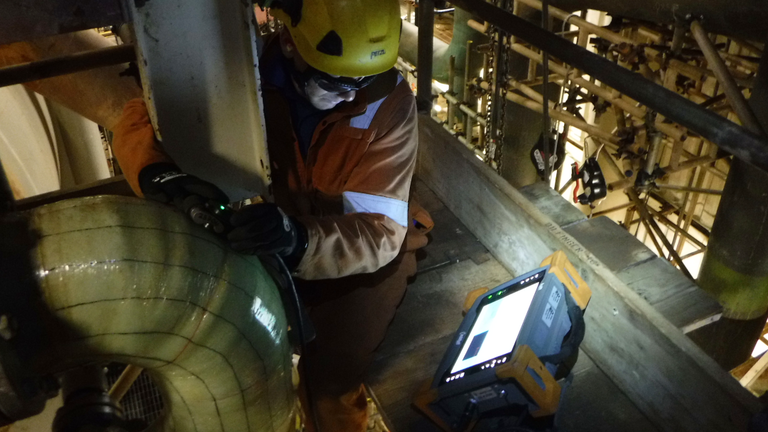Scope:
To ensure the integrity of their infrastructures, Oil and Gas operators frequently employ composite repair wraps to reinforce corroded sections of their pressure systems.
One of the key challenge our clients face is the ongoing monitoring of the remaining wall thickness of their insulated assets, particularly those insulated with composite repair wraps.
These wraps are permanent fixtures and assessing the material’s condition underneath them using conventional NDT methods poses a considerable challenge. For example, while radiography serves as an inspection solution, it is often time-consuming and can disrupt daily operations due to stringent safety requirements. Hence, recognising the need for an innovative approach, our clients sought out Bilfinger to find an alternative, highly efficient method that not only expedites the inspection process, but also consistently provide reliable results.
Services:
Inspection
To address the limitation of the conventional NDT techniques, Bilfinger Danmark turned to Pulse Eddy Current (PEC) technology.
PEC is a fast screening method that can be effectively applied to detect and monitor corrosion on pipes and vessels made of carbon steel without making direct
contact with the steel surface itself as it allows measurements to be made through non-conductive insulation, concrete, marine growth and even corrosion
blisters.
This innovative solution provides an average wall thickness values across the probe’s footprint area. As the thickness of the lift-off (or insulation) and the material
under scrutiny decreases, the smaller the foot becomes and the more accurate the average wall thickness measurements are.

